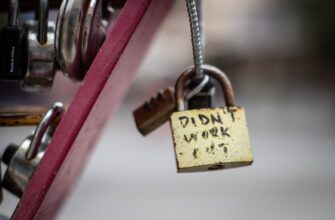“title”: “The Best Way to Backup Funds Low Cost: Smart, Affordable Strategies for Financial Security”,
“content”: “
- Why a Backup Fund is Your Financial Lifeline (Especially on a Budget)
- Core Principles for Low-Cost Backup Fund Building
- Top Low-Cost Methods to Build Your Backup Fund
- Implementing Your Low-Cost Backup Plan: A Step-by-Step Guide
- Overcoming Common Low-Cost Backup Fund Challenges
- FAQ: Best Way to Backup Funds Low Cost
Why a Backup Fund is Your Financial Lifeline (Especially on a Budget)
nnLife throws curveballs – a car repair, a sudden medical bill, or unexpected job loss. A backup fund (often called an emergency fund) is your essential safety net, preventing these surprises from derailing your finances or forcing you into high-interest debt. The challenge? Building this cushion often feels impossible when money is tight. The good news is that finding the **best way to backup funds low cost** is absolutely achievable with the right strategies. This guide focuses on practical, accessible methods anyone can use to build financial security without breaking the bank.nn
Core Principles for Low-Cost Backup Fund Building
nnBefore diving into specific methods, embrace these foundational principles for affordable saving:nn
- n
- Start Small, Think Big: Forget needing thousands upfront. Begin with a tiny, manageable amount consistently. $5 or $10 per week adds up significantly over time.
- Consistency is King (or Queen): Regular contributions, no matter how small, are far more powerful than sporadic large sums. Automate this whenever possible.
- Separate and Protect: Keep your backup fund completely separate from your everyday spending account. Out of sight, out of mind (and out of temptation’s reach!).
- Safety First, Growth Second: The primary goal is accessibility and preservation of capital for emergencies. Chasing high returns comes with risk you can’t afford for this specific pot of money.
- Low Fees are Non-Negotiable: Avoid accounts with monthly maintenance fees, minimum balance fees, or high transaction costs. Every dollar saved in fees is a dollar added to your fund.
n
n
n
n
n
nn
Top Low-Cost Methods to Build Your Backup Fund
nnHere are the most effective and affordable strategies to implement the **best way to backup funds low cost**:nn
- n
- 1. The Power of “Micro-Saving” & Round-Up Apps:n
- n
- How it Works: Apps like Acorns, Chime, or Qapital link to your debit card and automatically round up each purchase to the nearest dollar, depositing the “spare change” into a savings account or investment account.
- Why it’s Low Cost: You barely feel the impact on your daily spending. Many apps have low or no monthly fees for basic saving features.
- Tip: Set a maximum round-up limit per day/week if needed.
n
n
n
n
- 2. High-Yield Savings Accounts (HYSA):n
- n
- How it Works: Park your savings in an online bank account offering significantly higher interest rates than traditional brick-and-mortar banks (often 10-20x higher!).
- Why it’s Low Cost: Most HYSAs have $0 monthly fees, no minimum balance requirements (or very low ones), and FDIC insurance up to $250,000. Your money grows passively with compound interest.
- Tip: Research and compare rates on sites like NerdWallet or Bankrate. Popular options include Ally, Marcus by Goldman Sachs, and Discover.
n
n
n
n
- 3. Automated Transfers: “Pay Yourself First”:n
- n
- How it Works: Set up an automatic transfer from your checking account to your dedicated backup fund savings account immediately after each paycheck hits.
- Why it’s Low Cost: Zero fees involved. It forces savings before you have a chance to spend the money. Start with a tiny percentage (even 1-2%) of your income.
- Tip: Treat this transfer like a non-negotiable bill.
n
n
n
n
- 4. The “Found Money” Strategy:n
- n
- How it Works: Direct unexpected or non-regular income straight into your backup fund. This includes:n
- n
- Tax refunds
- Bonuses or commissions
- Cash gifts (birthdays, holidays)
- Money from selling unused items
- Rebates
n
n
n
n
n
n
- Why it’s Low Cost: This leverages money you weren’t counting on for daily expenses, so it doesn’t strain your budget.
n
n
n
- How it Works: Direct unexpected or non-regular income straight into your backup fund. This includes:n
- 5. Targeted Expense Reduction (The “Latte Factor” on Steroids):n
- n
- How it Works: Identify one or two small, recurring expenses you can temporarily eliminate or reduce. Redirect *only* that specific savings amount to your backup fund.li>n
- Why it’s Low Cost: Focuses on painless cuts (e.g., downgrading one streaming service, packing lunch one extra day, skipping daily coffee shop visits) without overhauling your entire lifestyle.
- Tip: Be specific: “I’m skipping my $4 coffee on Tuesdays and Thursdays and putting that $8/week into savings.”
n
n
n
n
n
n
n
n
nn
Implementing Your Low-Cost Backup Plan: A Step-by-Step Guide
nn
- n
- Define Your Initial Goal: Aim for a starter goal of $500-$1,000. This covers many minor emergencies and builds momentum.
- Choose Your Primary Method(s): Pick 1-2 low-cost strategies from above that resonate most (e.g., HYSA + Micro-saving app).
- Open the Right Account: Set up a dedicated High-Yield Savings Account online. Ensure it’s FDIC/NCUA insured and has no fees.
- Automate Relentlessly: Set up automatic transfers (even $5/week) and/or activate your chosen micro-saving app.
- Track & Celebrate Progress: Check your balance monthly. Celebrate hitting mini-milestones ($100, $250) to stay motivated.
- Scale Up Gradually: Once your starter goal is met, aim for 3-6 months of essential living expenses. Increase automated contributions as your income allows.
n
n
n
n
n
n
nn
Overcoming Common Low-Cost Backup Fund Challenges
nn
- n
- “I don’t have *any* extra money!” Start with the “Found Money” strategy or micro-saving apps. Sell one unused item. Literally save loose change in a jar and deposit it monthly. Every cent counts.
- “It’s too slow.” Focus on consistency, not speed. Celebrate small wins. Remember, slow progress is infinitely better than no progress. Compound interest accelerates growth over time.
- “I keep dipping into it.” Make it harder to access! Keep the money in a separate bank (not linked to your checking). Define clear rules for what constitutes a *true* emergency (needs vs. wants).
- “Interest rates are low.” While true compared to historical highs, HYSAs still offer the best *safe* return for immediate-access cash. The primary goal is security, not high returns.
n
n
n
n
nn
FAQ: Best Way to Backup Funds Low Cost
nn
- n
- Q: How much should I aim to save in my low-cost backup fund?n
A: Start with a small, achievable target like $500. Ultimately, aim for 3-6 months’ worth of essential living expenses (rent/mortgage, utilities, food, minimum debt payments). Build towards this gradually using low-cost methods. - Q: Where is the absolute safest place to keep my low-cost backup fund?n
A: An FDIC-insured (banks) or NCUA-insured (credit unions) High-Yield Savings Account (HYSA) is the safest and most accessible option. Avoid investing this money in stocks or bonds due to volatility risk. - Q: Are savings apps really safe and low cost?n
A: Reputable micro-saving and round-up apps (like Acorns Spend, Chime) partner with FDIC-insured banks. *Always* check the fine text for fees. Many offer free basic saving features, but premium tiers or investment options may have costs. Stick to the free saving functions. - Q: What counts as a “true emergency” for using this fund?n
A: True emergencies are unexpected, necessary, and urgent expenses that impact your health, safety, or ability to earn income. Examples: Major car repair, essential home repair (leaking roof, broken furnace), unexpected medical bill, critical pet care, essential travel for a family emergency, or covering basic living costs during sudden unemployment. A vacation or a new TV is NOT an emergency. - Q: How can I find the best high-yield savings account with no fees?n
A: Use comparison websites like NerdWallet, Bankrate, or DepositAccounts. Look for accounts explicitly stating “no monthly fees” and “no minimum balance requirement” (or a very low one like $0.01). Compare current APYs (Annual Percentage Yields). - Q: Is using cash in a jar a good low-cost backup method?n
A: It’s a very low-cost way to *start* saving spare change and build the habit. However, it offers no interest, carries theft/loss risk, and isn’t practical for larger sums. Transition to an FDIC-insured HYSA as soon as you have a small amount saved for safety and growth.
n
n
n
n
n
n
nnBuilding a financial safety net doesn’t require a high income, just smart, consistent habits. By leveraging the **best way to backup funds low cost** – focusing on automation, high-yield savings accounts, micro-saving, and strategic expense cuts – you can create vital financial security one small step at a time. Start today, no matter how small. Your future self will thank you when the unexpected happens.”
}








